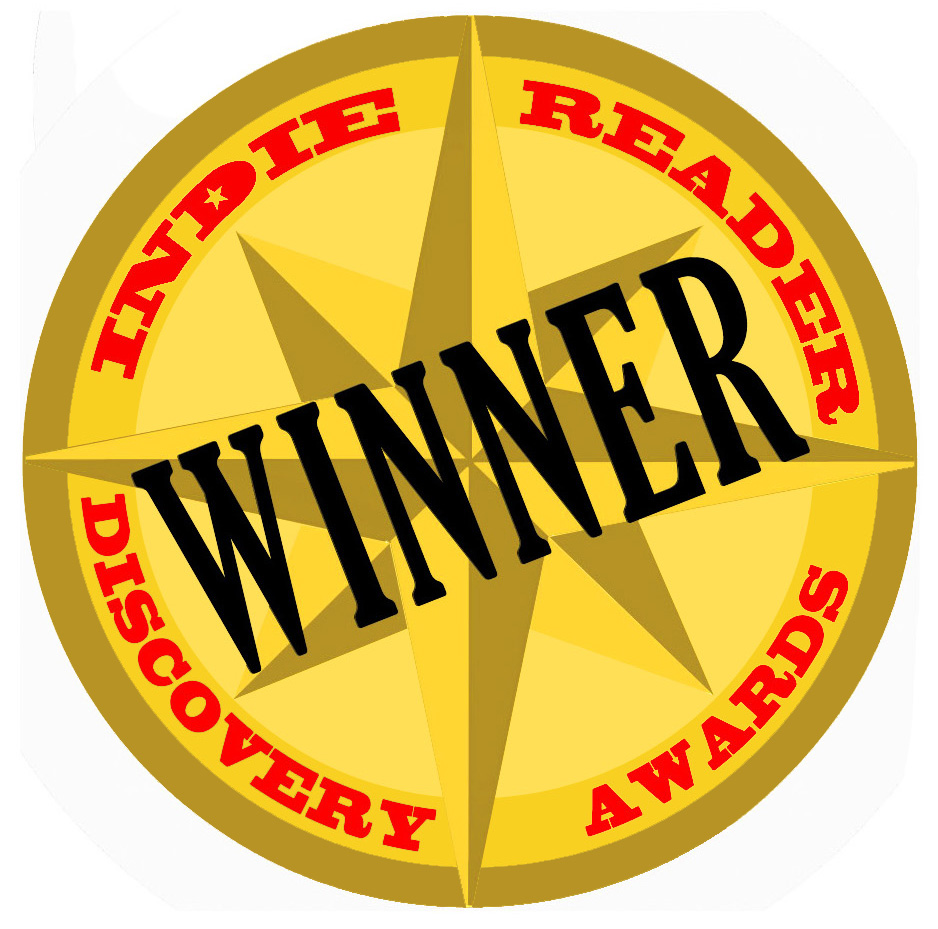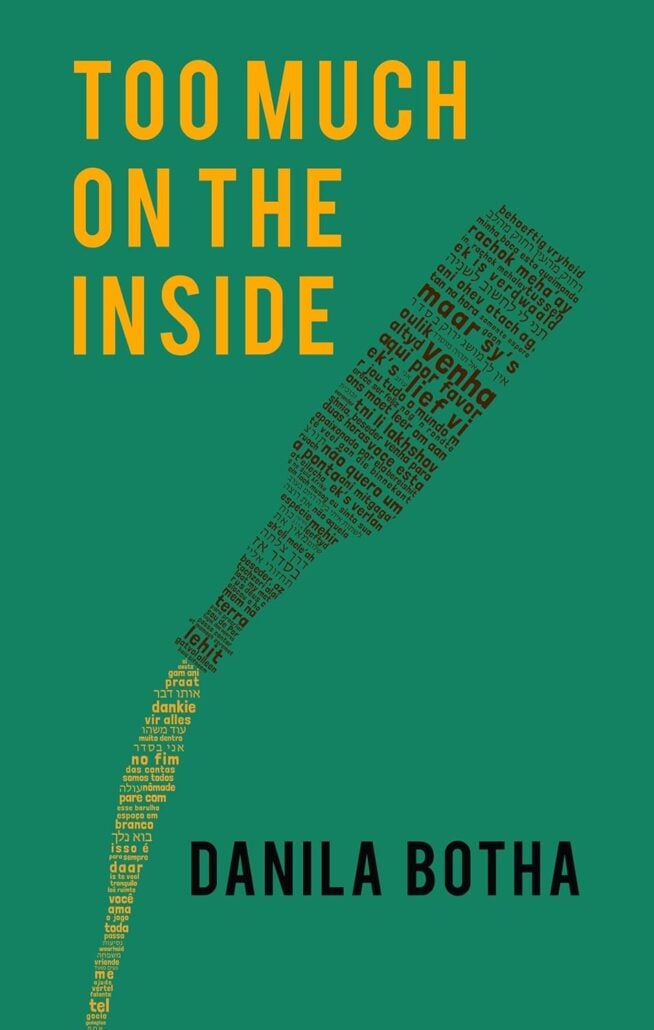
Things that Cause Inappropriate Happiness was the winner in the Women’s Issues (Fiction) category of the 2025 IndieReader Discovery Awards, where undiscovered talent meets people with the power to make a difference.
Following find an interview with author Danila Botha.
Thank you so much for this amazing honour. I appreciate it so much.
What is the name of the book and when was it published?
Things that Cause Inappropriate Happiness. It was published by Guernica Editions in 2024. https://guernicaeditions.com/products/things-that-cause-inappropriate-happiness
What’s the book’s first line?
“Yesterday morning, I got to school forty five minutes early only to find four kids having a fist fight.” This comes from the first short story, Sometimes I Like To Shoot Kids (which incidentally is about a teacher who wants to be a photographer, and likes to photograph kids)
What’s the book about? Give us the “pitch”.
It’s a collection of thirty- two short stories about women and identity, artistic, cultural, and where they fit into the world. There are lots of stories about Jewish identity, intergenerational trauma, relationships, friendships, community expectations, what it means to be an artist. It runs the gamut. I would say the stories are intimate, honest and hopefully relatable.
What inspired you to write the book? A particular person? An event?
There wasn’t one specific event or person that inspired all of the stories. Some were inspired by stories I’d heard that I wanted to understand more deeply. Some were inspired by books or articles I’d read, for example, Like An Alligator Eyeing A Small Fish was inspired by an essay by Dara Horn, and concurrently, the opiate crisis. I had just read Tara McGuire’s incredible, heartbreaking book, Holden Before and After, and somehow these two very disparate things came together in my mind. Proteksiye and Mazel was inspired by the diary of Ilya Gerber in the Alexandra Zapruder collection Salvaged Pages. From the Belly of the Whale was inspired by Lisa Foad’s incredible short story story collection The Night is a Mouth, and Abraham Karpinowitz’s Vilna, My Vilna. There’s Something I’ve Been Meaning to Say to You was inspired by the Covid pandemic, and an imagined new way of communicating what the character felt desperately needed to be said. I love short stories so much . I love the economy of the form, the succinctness, and I think for opportunity for a brief but intimate window into someone’s life that we wouldn’t otherwise have.
What’s the most distinctive thing about the main character? Who-real or fictional-would you say the character reminds you of?
Because it’s a short story collection, there isn’t a main character per se, but there are characters that reoccur in several linked stories. Born Not Made, Would You Rather, and His Forever Girl all follow the same protagonist through her teenage years.
I felt very invested in all of the characters, whether I agreed with what they did or said or not. In fact, I love writing difficult characters, like the ones in Black Market Encounters or If You Play With Fire, or Always An Angel, Never A God, for example. I write to try to understand people, to understand different perspectives and experiences more deeply. I hope I did all of them justice and portrayed them in all of their complexity.
It was fun sometimes to push at the very limits of what was possible, to see what would happen in a more extreme scenario, to see how they would respond and why. All of my characters are trying to figure out who they are, especially in relation to other people’s and social and community expectations. There are artists of many varieties, for example, all trying to figure out how to make the creative life work.
The main character in the title story has rheumatoid arthritis and is trying to figure out how to still be a visual artist, how to still feel like herself despite the realities of a really challenging autoimmune disorder. She meets a conduit in an art supply store who looks just like Leonard Cohen, who takes her back to her teenage years in the nineties, for some perspective on where her life is now. I was a teenager in the 90’s, so looking back at those kinds of details was fun. I also really don’t write autobiographically, but I do have rheumatoid arthritis, and there was something very gratifying about writing about it, even in a totally fictional context.
What’s the main reason someone should really read this book?
If you love short stories, I hope you’ll enjoy this collection. Short stories are so great when you’re busy and have inconsistent times to read. You can read one story, and not worry about forgetting key details by the time you come back to it like you would with a novel. If you’re looking for stories with characters you can relate to, and connect with, if you hope to feel less alone when you read something, this book is for you.
If they made your book into a movie, who would you like to see play the main character(s)?
This is such a fun question. Being a Canadian writer, I naturally lean towards the talented Canadian actors, and there are so many. A lot of the stories are Jewish themed, and Emanuelle Chiriqui is not only incredibly talented, but she’s also proudly Jewish and involved in Jewish storytelling. Megan Park is a talented actress (and writer and director) and like the main character in my title story, also has rheumatoid arthritis. I think either of them would be amazing. I love Jessica Pare’s work too, I think she’s so great at playing nuanced, complex women, and she’d be amazing in so many of the stories, especially the darker ones.
When did you first decide to become an author?
I’ve always written and wanted to write, even as a kid. I was an early reader and I loved reading. I also used to daydream and make up a lot of stories. I was lucky to get a lot of encouragement early on, not just from my family but from one of my teachers, who was amazing. As I got older, writing became the way I expressed myself, my observations, my jokes, my complicated feelings, the way I understood and processed the world around me. My first publication was when I was sixteen, for a music magazine in Canada. I wrote some reviews and in time, I interviewed a few bands. I was so excited the first time I wrote a feature, it was on the metal band Kittie, who were so cool and kind to me.
Originally, I was studying only visual art in my undergrad, and then I found out about a Creative Writing program at my university and I applied. I wrote my first short story on the bus ride home, to get into the program. It was called Another Other and it later ended up being published in my third book of short stories For All the Men (and Some of the Women) I’ve Known.
I love writing so much, and I always have. I’m very grateful to get to do this.

Is this the first book that you’ve written?
No, it’s my fourth. My first book, a collection of short stories called Got No Secrets, was published in 2010 in Canada and in South Africa. My second book, a novel called Too Much on the Inside was published in 2015. Things that Cause Inappropriate happiness is my fourth book and third short story collection. My fifth book, a novel call A Place for People Like Us will be published by Guernica Editions this fall. My first graphic novel, Call Me Vidal, which I wrote and illustrated will be published by At Bay Press in 2026. I’m currently working on a new short story collection.
What do you do for work when you’re not writing?
I teach Creative Writing. I’m part of the faculty at Humber College’s School for Writers and I teach at University of Toronto’s School of Continuing Studies in the Creative Writing certificate program. I also try to do as much in the writing community as I can, from residencies to doing workshops and reading series, or hosting book events or Q&A’s or class visits if I’m invited, or being part of literary juries or grant juries, or interviewing other authors, or blurbing other authors books. I love every part of this job so much. I really feel lucky to get to do all of it.
How much time do you generally spend on your writing?
I write everyday, or as often as I can. I start to feel out of sorts if I’m not working on a short story, or if I’m not working on some kind of writing project. I also try to read as much as I can.
I read an interview with Lauren Groff once where she talked about reading for two or three hours a day as part of her writing practice and it felt so validating to read that she considered it just as essential to the process. I love reading so much. I have eleven shelves at home of nothing but short stories.
Would you go traditional if a publisher came calling? If so, why?
I feel very lucky to have only published with traditional publishers, although smaller ones. Guernica Editions have been amazing to work with. My editor, Michael Mirolla has been fantastic, as has Anna and Crystal and the whole team.
Which writer, living or dead, do you most admire?
There are so many. Heather O’Neill, Zoe Whittall, Etgar Keret, Nathan Englander, Aimee Bender, Neil Smith, Denis Johnson, Raymond Carver, Cheever, Chekhov, David Bezmozgis, Lisa Moore, Anosh Irani, Lauren Groff, Alexander McLeod, Rebecca Rosenblum, Carleigh Baker, Ivan Coyote, Ayelet Tsabari, Leesa Dean, Martha Batiz, Catherine Bush, Karen E Bender, Manya Wilkinson, Jean Marc Ah Sen, Kelly Link, Shira Nayman, Marisa Labozetta, graphic novelists like Ken Krimstein, Becky Barnes, and so many more. I feel incredibly lucky to be part of such an incredible writing community.
Thank you so much for these wonderful questions, and for choosing Things that Cause Inappropriate Happiness for this award. I can’t even tell you how much I appreciate it.

